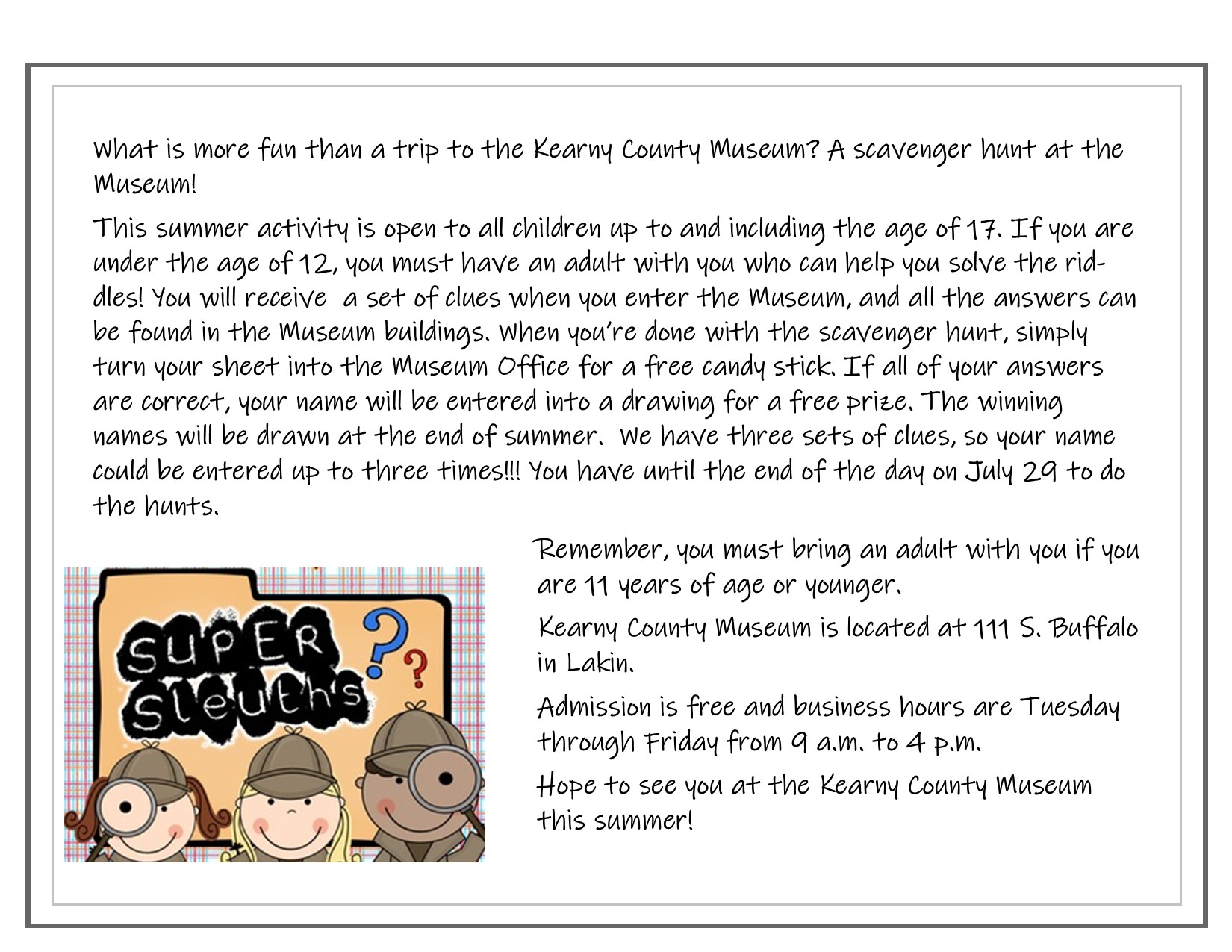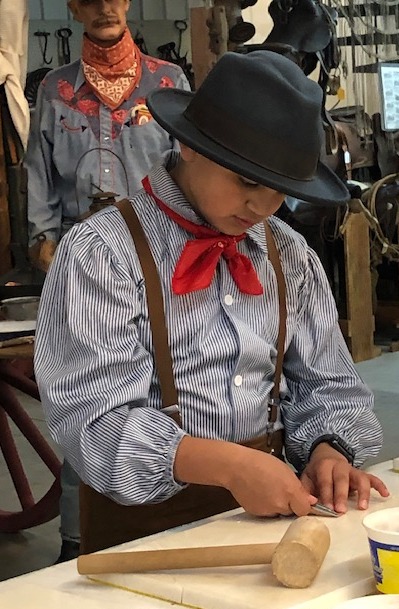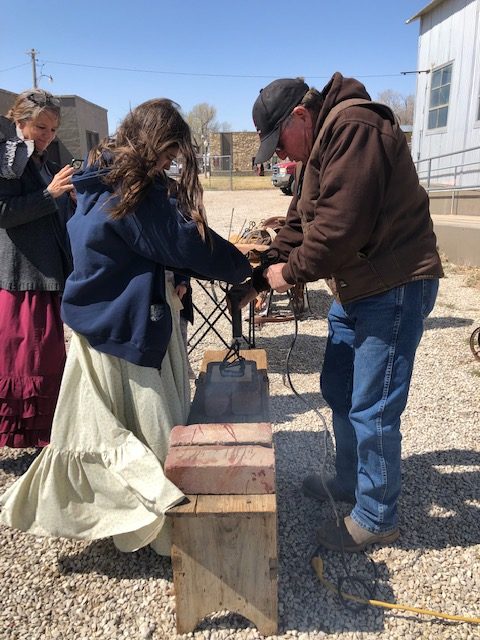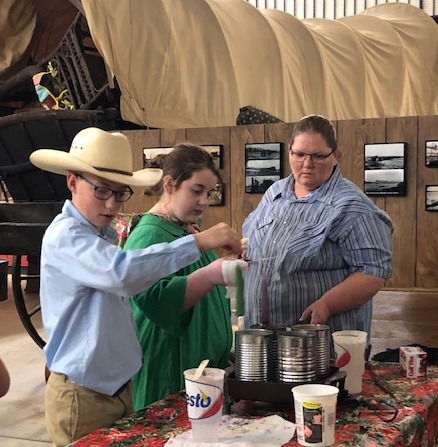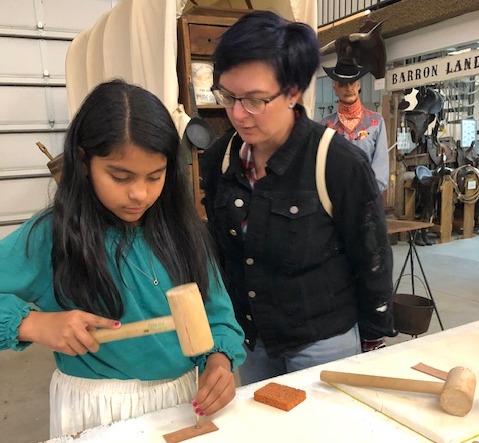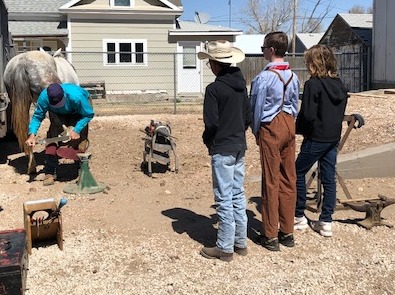John O’Loughlin, the father of Lakin, was born in 1842 in County Clare, Ireland. His parents, Peter and Margaret O’Loughlin, had four other children. Two of those children and Peter died during Ireland’s great potato famine. John’s mother re-married, and the family moved to America when he was six years old.
John’s stepfather, Andrew White, began a freighting business in Dubuque, Iowa, but was soon killed by lightning. The family, strangers in a foreign land, were helped by John’s uncle. When John was big enough to harness up the horses, he went to work. By the age of 17, he was out on his own. When the Civil War began, John freighted for the Army as a government teamster in the department of quartermaster at Fort Leavenworth. After the war, he continued with the Army, driving wagons to all the western outposts. John was along on several expeditions against the Plains Indians serving beside Generals Hancock, Sheridan and Custer. The experiences were certainly dark spots in his life, and he never spoke about them. John left government service in 1869.
After eight years of traveling over the trails, he knew that both Army and civilian wagons on the military road from Fort Hays to Fort Dodge had trouble crossing Pawnee Creek about 40 miles north of Dodge City. So John built a toll bridge and stockade from poles cut along the creek. He also had a well inside the stockade ensuring that the Indians could not cut off his water supply. His stockade consisted of bedrooms, a store and eating rooms. He sold all kinds of groceries and served meals at all hours, night and day. Thus, he became the first white settler in what was later named Hodgeman County. John thrived by doing business with the government troops, freighters, cowboys and buffalo hunters. Well-known names such as President Hayes, “Wild Bill” Hickock, “Buffalo Bill” Cody and Jesse James were recorded in his register at the crossing.
John sold his lucrative little business to George Duncan after the railroad reached Dodge City in 1872. The site would become known as “Duncan’s Crossing” and is marked by a historical sign to this day. And although he had already had a very full and colorful life, John still had much ahead of him. According to notes left by one of his grandchildren, John then bought a boarding house in Dodge City, but it was a wild and rowdy town which was disappointing to the Irishman. He sold the boarding house soon after and on April 3, 1873, arrived at the rail site of Lakin. John had been impressed with this part of the Arkansas River Valley while delivering supplies to Fort Aubrey. He set up a trading post in an abandoned dug-out left behind by the railroad crews.
John traded with buffalo hunters, freighters, travelers on the Santa Fe Trail and cattlemen. His business flourished, and eventually Lakin began to grow. By 1879, John had more business than the dugout store could handle. He built a 30×50-foot store building just a few feet away from the dug out. He married Mary Farrell who was also Irish in 1882, and they made their home upstairs in the store. Using eight horses, chains and large logs, the store building was moved to Main Street in 1883. For a time, John’s brother-in-law, Michael Weber, joined him in the mercantile business, and they expanded their services to include the sale of dry goods, clothing, hardware, agricultural implements, cement, lumber, coal and more. But John’s business dealings were not limited to the store. He also had considerable land and cattle interests and served as postmaster. He was also vice-president of the Lakin State Bank.
As John’s business interests grew, so did his family. John and Mary raised seven children in their family home on the southeast outskirts of Lakin. When their sons were grown, they took over the O’Loughlin Store and John’s ranching interests.
John O’Loughlin died in 1915 at the age of 73. In 1935, he was chosen as Kearny County’s entry to the Hall of Fame at the Kansas Diamond Jubilee because of his pioneering qualities, his honest methods of dealing with his fellow man, and his helpfulness to early settlers who found themselves in need of assistance. His daughter Margaret once said that John was the last person to want any fuss made over him or what he did. “One reason I think the old timers said so many nice things about my father was that he was able to extend credit to so many of them for so long while they were proving up. When settlers got discouraged, they’d come and want to sell their land. But Papa wouldn’t let them. If there was any way he could persuade them, he would not let them sell the land. Then he would arrange either for them to … work on his farm, or they could work on one of the other ranches, so they’d have groceries and things to get through the winter. And that way, they could stay in this country.”
John and Mary’s children also played key roles in the development of Lakin. In 1974, their daughter Jennie Rose deeded the museum’s White House and the half block that it sat on to the Kearny County Historical Society. The oldest house in town, the White House was once home to John O’Loughlin’s eldest son, William, and his family. The property has since been enhanced to include not only the house, but also the main museum building and annex, the Columbia School and Lakin’s depot. The community of Lakin has much to be thankful for because of John O’Loughlin and his family.
Sources: “Timing is Everything” by Fern Bessire, Kansas Territorial Magazine July-August 1983; The Lakin Independent Aug. 9, 1935; “Ft. Hays – Ft. Dodge Trail” by C. E. Roughton, History of Kearny County Kansas Vol. I, and museum archives.
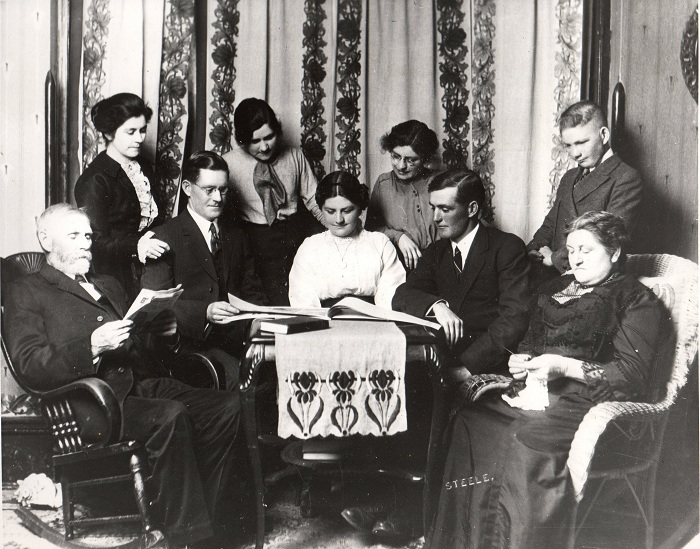
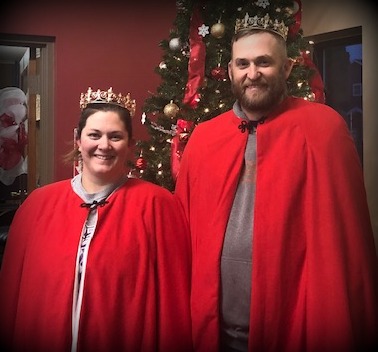


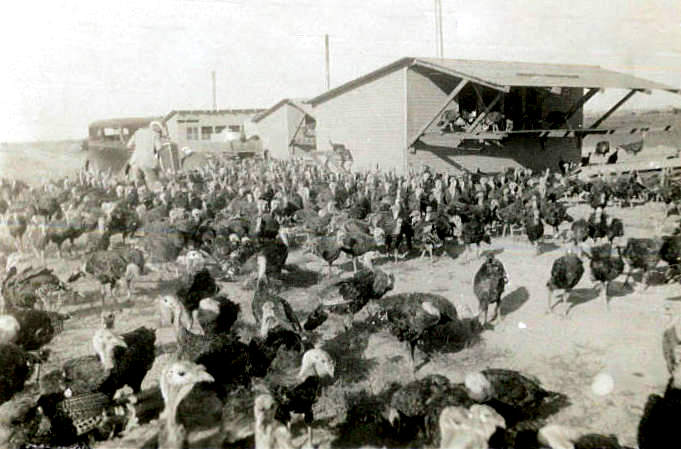 As if enduring the Dust Bowl Days and Great Depression were not enough, grasshoppers were an additional problem during the 1930s. To battle the pests and ultimately save his alfalfa crop, Orlie White began raising turkeys on his Kearny County farm located on the north shore of Lake McKinney. According to a story written by his wife, Prudence, “turkeys were the best grasshopper catchers in the world.”
As if enduring the Dust Bowl Days and Great Depression were not enough, grasshoppers were an additional problem during the 1930s. To battle the pests and ultimately save his alfalfa crop, Orlie White began raising turkeys on his Kearny County farm located on the north shore of Lake McKinney. According to a story written by his wife, Prudence, “turkeys were the best grasshopper catchers in the world.”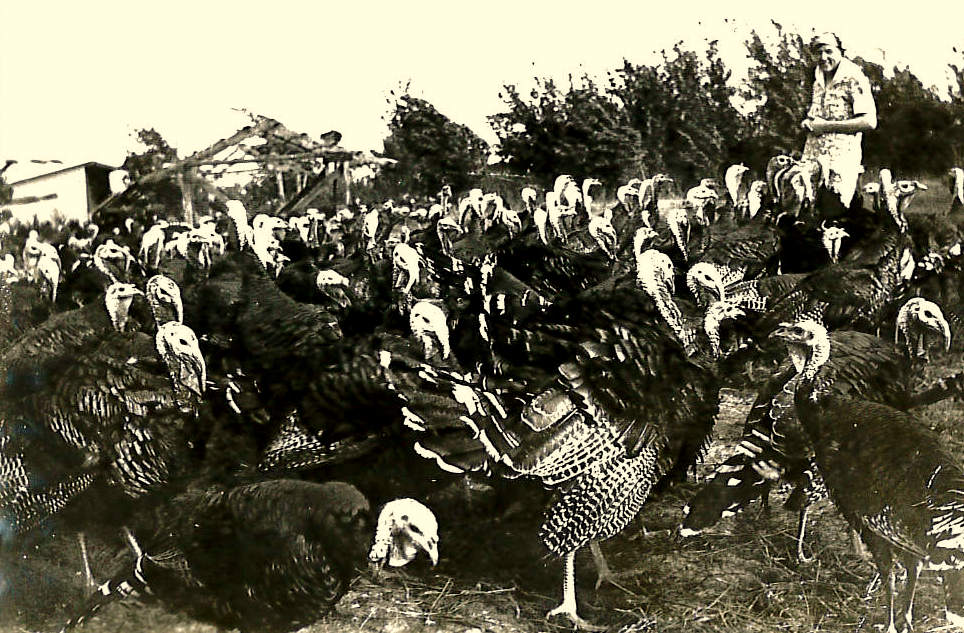
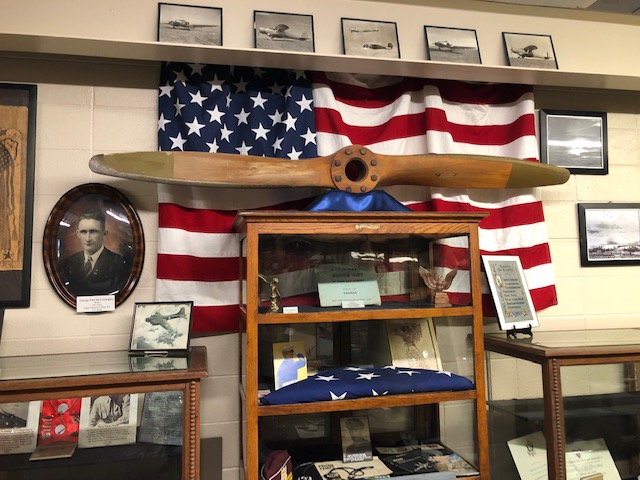
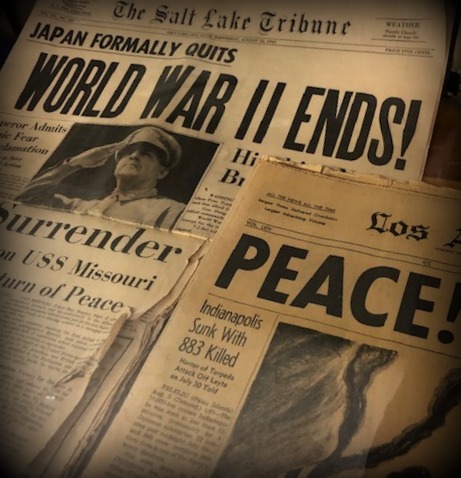 The Uniform Holiday Bill, signed June 28, 1968, was intended to ensure three-day weekends for Federal employees by celebrating four national holidays on Mondays: Washington’s Birthday, Memorial Day, Veterans Day, and Columbus Day. Many states did not agree with this decision and continued to celebrate the holidays on their original dates. The first Veterans Day under the new law was observed with much confusion on October 25, 1971. It was quite apparent that the commemoration of this day was a matter of historic and patriotic significance to a great number of Americans so on September 20th, 1975, President Gerald R. Ford returned the annual observance of Veterans Day to its original date of November 11. This action supported the desires of the overwhelming majority of state legislatures, all major veterans service organizations and citizens.
The Uniform Holiday Bill, signed June 28, 1968, was intended to ensure three-day weekends for Federal employees by celebrating four national holidays on Mondays: Washington’s Birthday, Memorial Day, Veterans Day, and Columbus Day. Many states did not agree with this decision and continued to celebrate the holidays on their original dates. The first Veterans Day under the new law was observed with much confusion on October 25, 1971. It was quite apparent that the commemoration of this day was a matter of historic and patriotic significance to a great number of Americans so on September 20th, 1975, President Gerald R. Ford returned the annual observance of Veterans Day to its original date of November 11. This action supported the desires of the overwhelming majority of state legislatures, all major veterans service organizations and citizens.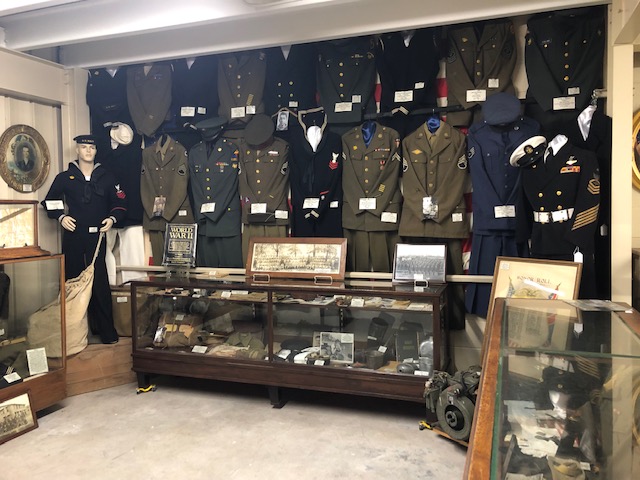 The restoration of the observance of Veterans Day to November 11 not only preserves the historical significance of the date, but helps focus attention on the important purpose of Veterans Day: A celebration to honor America’s veterans for their patriotism, love of country, and willingness to serve and sacrifice for the common good.
The restoration of the observance of Veterans Day to November 11 not only preserves the historical significance of the date, but helps focus attention on the important purpose of Veterans Day: A celebration to honor America’s veterans for their patriotism, love of country, and willingness to serve and sacrifice for the common good.
